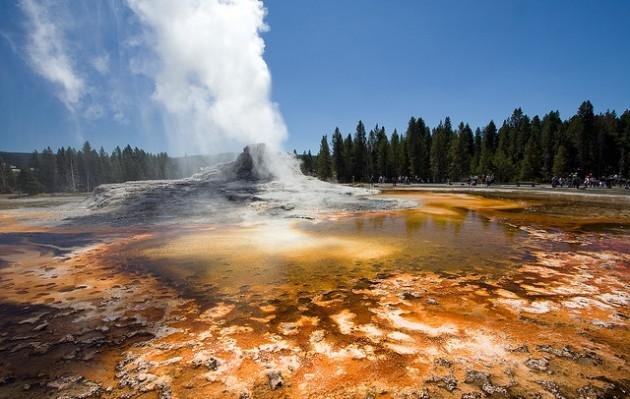Around one thousand active geysers remain On Earth in places such as the US, Iceland and New Zealand. All of these places have got high levels of geothermal activity, which is necessary for geysers to form.

Heat from below the Earth's surface creates geothermal energy, which supplies the power to volcanoes, hot springs and other geothermal features.
A geothermal energy source is one of the key components of geyser formation, but other conditions Ware also necessary to cause a geyser to erupt.

For geysers to occur there must be heat, water and an underground plumbing system. Deep inside the Earth, magma provides heat to surrounding rocks. Water from rain. snow or rivers works its way underground through thin pathways in the rock. As the water reaches the hot rock which surrounds the heat source, it begins to rise back to the surface. As the hot water rushes to the surface it gets stuck in the narrow channels. These channels in which the water is held are known as the geyser’s plumbing system.
The plumbing system extends miles below the Earth's surface and as the water mass in the system increases, so does the water pressure. This pressure causes the water to boil above its normal boiling point, which means the water becomes supercharged and superheated. As a result, this highly-pressurised water is squeezed through the small crevices in the rock and nears the surface, where its pressure drops suddenly and the water releases itself as an eruption of steam.
The eruption will stop when the water supply has diminished or the water temperature has cooled.
The most beautiful geysers:
-Nevada:

-Islandia:

-Yellowstone, USA:

Sort: Trending